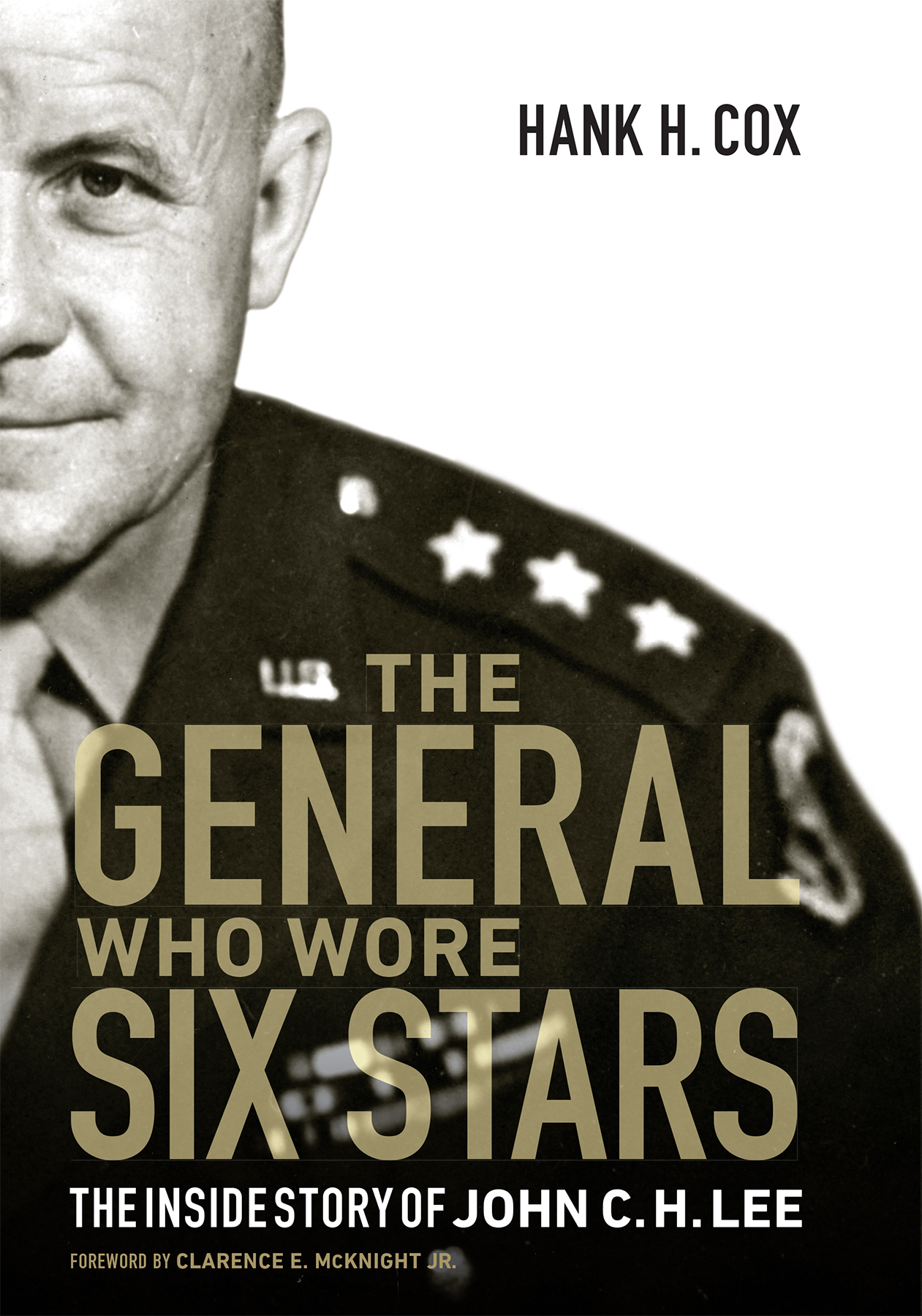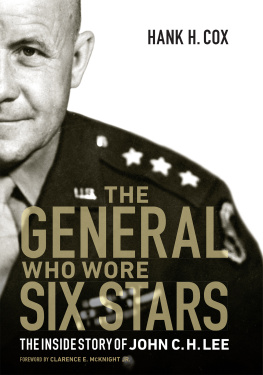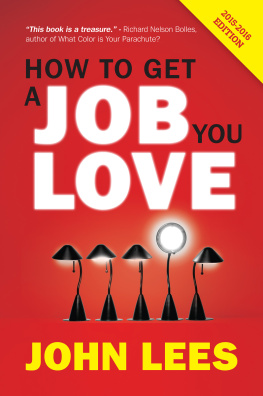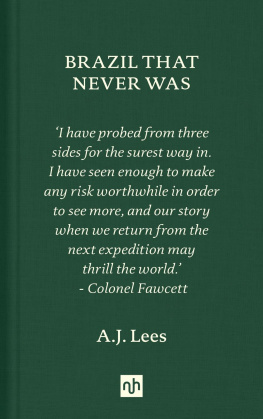
Valuable, informative, and comprehensive.... [Lt. Gen. John C. H. Lee] accomplished the nearly impossible task of supporting logistically the greatest, most complex, and most demanding enterprise in human history.
Gen. Frederick J. Kroesen, U.S. Army (Ret.)
This is a gem of a book that needed to be written.... Cox makes a persuasive case that the general was the pivotal figure in assuring that the combat forces were able to move with the speed in which they did from Normandy to Berlin. For anyone interested in expanding his or her knowledge of how the Allies were victorious, this well-written history is essential reading.
Martin Lowery, executive vice president of the National Rural Electric Cooperative Association
A fascinating and very important story! Hank Cox has done a masterful job telling this little-understood story of how wars are won by the vital and sustaining power of manufacturing, transportation, and military supply and logistics,... [which] are vitally important to military victory and winning wars, then, now, and forever.
Daniel M. Kush, consultant for the U.S. Chamber of Commerce, specializing in government, public, and media relations
The General Who Wore Six Stars
The General Who Wore Six Stars
The Inside Story of John C. H. Lee
Hank H. Cox
Foreword by Clarence E. McKnight Jr.
Potomac Books
An imprint of the University of Nebraska Press
2018 by Hank H. Cox
Cover designed by University of Nebraska Press; cover image is from the interior.
Author photo Eric Bond.
All rights reserved. Potomac Books is an imprint of the University of Nebraska Press.
Library of Congress Cataloging-in-Publication Data
Names: Cox, Hank H., 1945 author.
Title: The general who wore six stars: the inside story of John C. H. Lee / Hank H. Cox; foreword by Clarence E. McKnight Jr.
Description: Lincoln: Potomac Books, an imprint of the University of Nebraska Press, 2018.Includes bibliographical references.
Identifiers: LCCN 2017026965 (print)
LCCN 2017027214 (ebook)
ISBN 9781612349633 (cloth: alk. paper)
ISBN 9781640120105 (epub)
ISBN 9781640120112 (mobi)
ISBN 9781640120129 (pdf)
Subjects: LCSH : Lee, John Clifford Hodges, 18871958.GeneralsUnited StatesBiography. | World War, 19391945Biography. | United States. Army. Corps of EngineersBiography.
Classification: LCC E 745. L 377 (ebook) LCC E 745. L 377 C 69 2018 (print) DDC 940.53/73092 [B]dc23
LC record available at https://lccn.loc.gov/2017026965
The publisher does not have any control over and does not assume any responsibility for author or third-party websites or their content.
To my dear friend Lt. Gen. Clarence E. McKnight Jr.
Contents
Clarence E. McKnight Jr.
The Germans have a termMaterialschlachtthat describes a battle fought by materials more than troops. War has always been dependent upon materials. Napoleon said an army travels on its stomach, and that is as true today as it was in his timeeven more true, I would think, given the complexity of modern weapons and the sophistication of modern warriors.
World War II was a Materialschlacht of unprecedented proportions. The United States became truly the worlds arsenal of democracy as we supplied arms, food, ammunition, medicine, vehiclesall the accoutrements of war for our own armies and those of our allies. But the production of war matriel is only part of the equation. An even bigger challenge is getting that matriel to where it is needed under wartime conditions. Invading Europe across the Normandy beaches called for an inventory of literally millions of itemsspare parts and tires for vehicles, different kinds of ammunition, different kinds of food, clothing for all sorts of weather and conditions. The list was endless.
The United States had all of that stuff piled up in depots across Great Britain by early 1944, and on June 6 we began moving it across the English Channel and into France. The one guy primarily responsible for making this happen was Lt. Gen. John C. H. Lee, head of the Service of Supply ( SOS ), which later was renamed the Communications Zone, or ComZ. Getting it all across the channel was just the beginning of his challenge. When Pattons famed Third Army went on its end run around the Germans and across France, Lee suddenly had to throw all of the armys supply plans out the window and somehow figure out how to get fuel and ammo to the troops, who were farther away with each passing day. His supplies were coming slowly across Omaha Beach because it took a long time to capture and repair major ports. If that werent challenge enough, he had to contend with recalcitrant combat generals who resented his authority and constantly sought to undercut him.
It is a little known fact that Lee commanded one in four American soldiers in the European theater of operations and was for a time General Eisenhowers deputy and thus second in command of the European theater. He contended with a host of problems that were exacerbated by his personal eccentricities, which made him a subject of widespread ridicule. When he first got to Great Britain, he demanded and got his own private train so he could travel around orchestrating the great buildup. When Paris was captured, he moved his entire command into the City of Light against Eisenhowers expressed wishes. He was more committed to protocol than most officers, as well as highly religious. Lee went to church every day, two or three times on Sunday, and made his staff go with him.
But perhaps his most obnoxious qualityand this was a sign of the timeswas his advocacy of African Americans, whom he believed could contribute more to the war effort if the old racial attitudes could be discarded. About nine hundred thousand African Americans served in the U.S. Army in World War II, mostly in service and supply roles, which means many of them worked for Lee. When in December 1945 a troop shortage emerged and the War Department exhorted the field armies to move more men from service jobs into the infantry, Lee took it upon himself to issue an order permitting black men under his command to transfer to the infantry. That kicked up a firestorm, but he never backed down. And a few years later President Harry Truman made it official when he formally integrated the U.S. military.
Every military veteran who, like me, is steeped in our history knows stories about Lee. I came along too late for World War II, but I heard the stories. Lees initials were J.C.H., so the wags said his initials stood for Jesus Christ Himself. As a younger officer he often volunteered to serve on court-martial boards, so some called him Courthouse Lee. He also had a peculiar habit of wearing three stars on the back of his helmet in addition to the three on his front. (I also made it to three stars, but it frankly never occurred to me to wear six.)
And yet I see many parallels between his career and his character and my own. Like Lee, I am a man of religious faith. Perhaps I do not wear my faith on my sleeve the way he did, but no one has ever had to ask me twice to share my faith with them. Like Lee, I was always a stickler for protocol. You get some rough characters in the army. Rigid discipline is a key component of keeping them focused on their jobs. Like Lee, I often served on court-martial panels. In Germany in the years after Vietnam we had serious discipline problems in the military. I tried to help young men in crisis as best I could, but when necessary I came down hard on them. I did not enjoy it, but that is the responsibility of senior officers.












